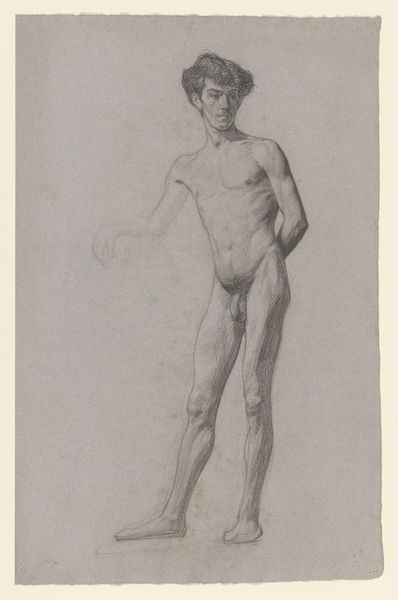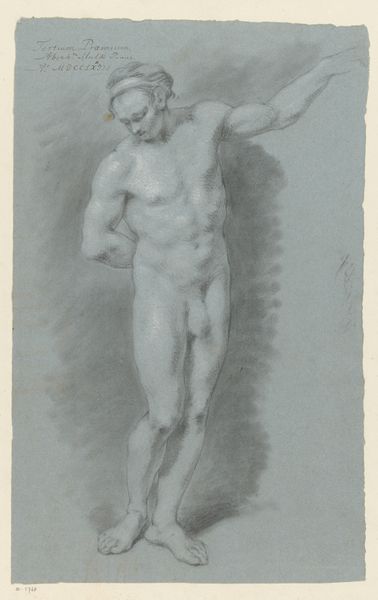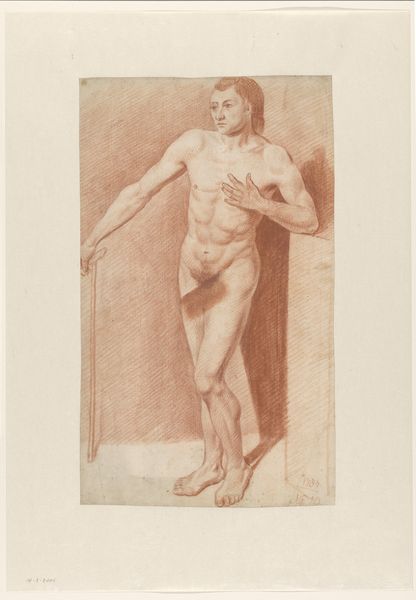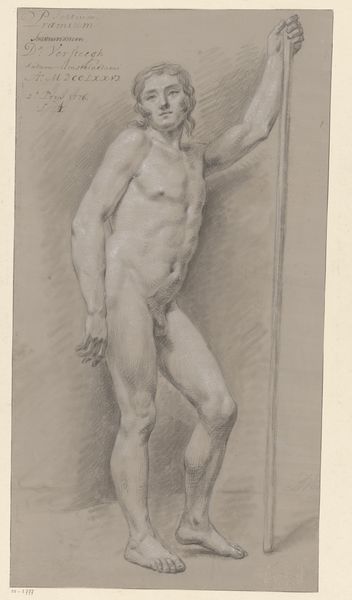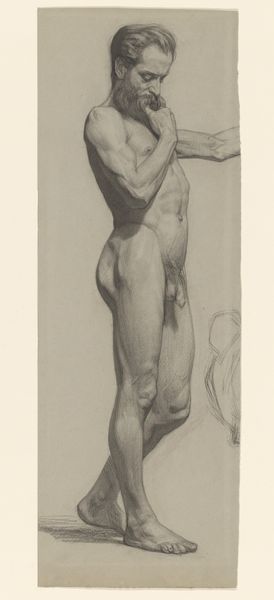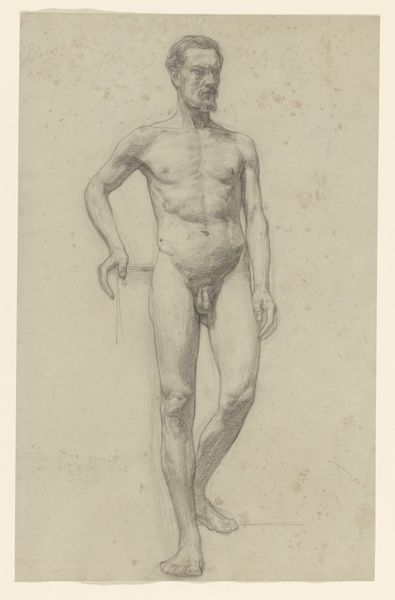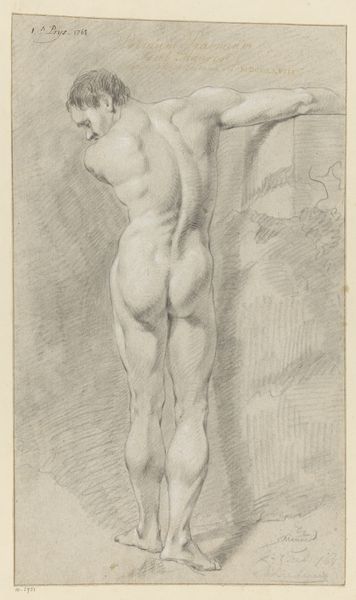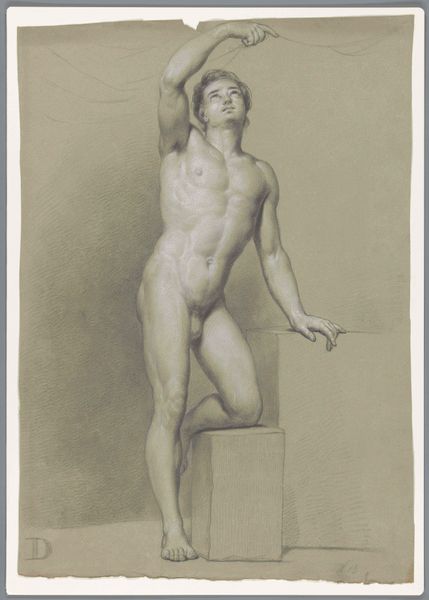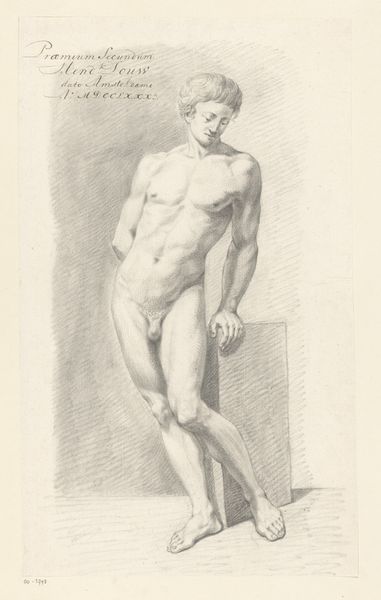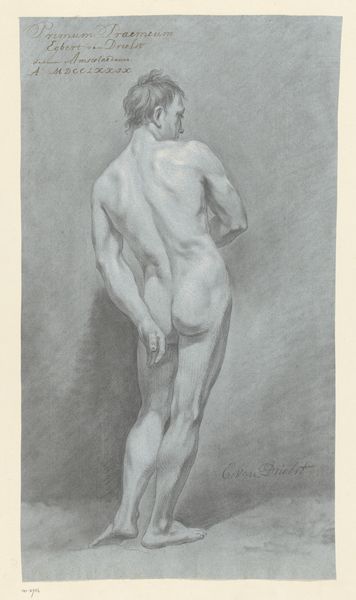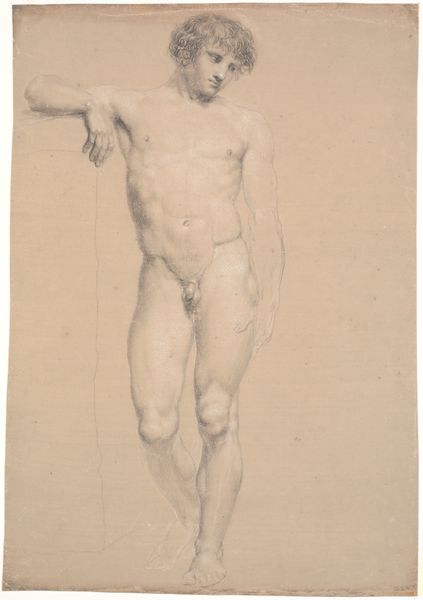
Staand mannelijk naakt; academiestudie 1789
0:00
0:00
#
pencil drawn
#
amateur sketch
#
light pencil work
#
pencil sketch
#
charcoal drawing
#
charcoal art
#
portrait reference
#
pencil drawing
#
portrait drawing
#
pencil work
Dimensions: height 508 mm, width 281 mm
Copyright: Rijks Museum: Open Domain
Editor: This pencil drawing, "Staand mannelijk naakt; academiestudie" created in 1789 by David-Pierre Giottino Humbert de Superville, showcases a nude male figure. The artist used delicate, almost ephemeral lines. What strikes me most is the raw immediacy of the work, like a fleeting observation captured in graphite. How do you see this piece? Curator: For me, the intrigue lies in the artist's process, the labor involved in creating this academic study. It reveals so much about art education during that era. The choice of pencil, a readily available material, points to a specific mode of production—a practice meant for replication and skill-building within a controlled system. It highlights the social context of artistic training, almost like a blueprint, stripping away the traditional emphasis on aesthetic refinement, no? Editor: That's interesting. I was focused on the form and light, but I didn't consider the piece as part of a larger system of art production. The use of humble materials indeed speaks volumes about the artist’s place in the art world at the time. Curator: Exactly. And consider how this relates to our consumption of art now. We view this finished drawing in isolation, perhaps removed from its original intended function of study and training. Editor: So, by examining the materials and the intended use, we can challenge the traditional perception of this work as purely "high art"? Curator: Precisely. We see it as a product of labor and a component of an artistic process rather than an isolated masterpiece. Editor: I see how a focus on materials and processes offers a fresh way to approach even seemingly straightforward pieces. Curator: Absolutely. Considering these drawings outside traditional parameters expands how we understand art history. It underscores art's connections to social realities of production, materials, and learning environments, not only as beautiful things created in a vacuum.
Comments
No comments
Be the first to comment and join the conversation on the ultimate creative platform.
